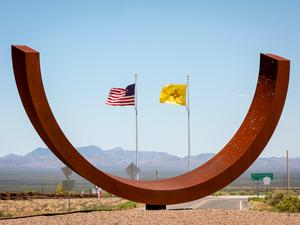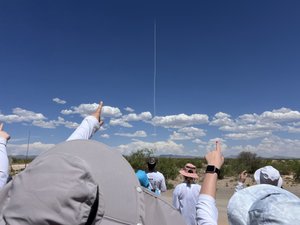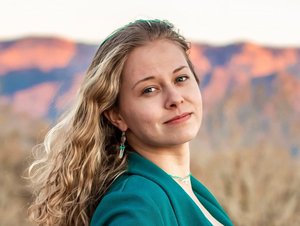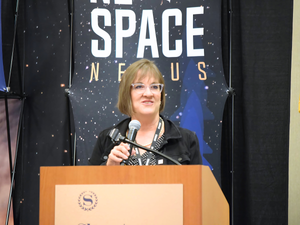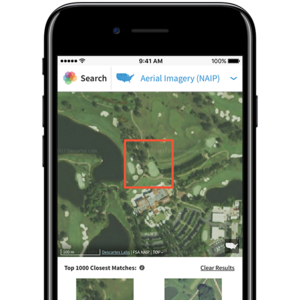
Agnes Chavez's STEMarts Lab sits at an interesting intersection. The nonprofit, established in 2009, works with youth and young adults in especially rural, underserved parts of New Mexico to promote three things — artistic, scientific and humanistic literacy.
"That trio makes us unique," Chavez told New Mexico Inno.
Sitting at the "intersection of arts, science and technology," that trio also aligns the organization's mission with that of another nonprofit in the state — one that formed just this year as an evolution from an economic development-focused space coalition, she said.
Called the SpaceValley Foundation, the new nonprofit rebranded and restructured from the Space Valley Coalition, a former group of municipalities, educational institutions and aerospace-focused organizations that had sought to grow New Mexico's commercial aerospace industry.
In that sense, one of the SpaceValley Foundation's focuses isn't unique. Bryce Kennedy, SpaceValley's executive director, said one of the nonprofit's two prongs — "Space for Earth" — is focused on aerospace-related economic development, similar to the work of the Space Valley Coalition.
Dash2 Labs, an Albuquerque-based software development firm and SpaceValley member, is leading the nonprofit's economic development work, Kennedy said.
But SpaceValley's second prong, "Space for All," serves as a newer permutation for the nonprofit. "Space for All" encompasses all of the artistic and creative endeavors surrounding the world of space, explained Merridith Ingram, founder and CEO of The Riotmind Agency, a public relations firm leading PR and marketing work for the SpaceValley Foundation.
"So often we're focused on economic development, we're focused on commercial industry, and we're losing the creativity that is absolutely necessary to fuel innovation," Ingram said. "If you lose that, then you aren't going to be able to think as big as space is going to require."
Those two focuses serve as a sort of "connective tissue" for New Mexico's space industry, Kennedy said. When he, Ingram and other partners were having initial conversations about what a rebranded and restructured SpaceValley could look like, the "breadth" of groups either interested in or directly involved with space in New Mexico started to emerge, Ingram said.
That includes traditional players in the state's space ecosystem like Q Station, an Air Force Research Laboratory-backed coworking space in Albuquerque, and Spaceport America, as well as less traditional players, including arts and culture groups like the Santa Fe Opera, for instance.
"One of the things New Mexico does really uniquely, in an effort to drive innovation, it's open and accessible to sectors that are outside of traditional space and aerospace," Ingram said. "That's one of the things this market does better than any that I've seen, because of that creative vision here."
STEMarts Lab provides an example of an organization already working at that intersection of industry and creativity, according to Kennedy and Ingram. Chavez said one of her nonprofit's initiatives is running apprenticeship and internship programs for both K-12 students and for people in college to either work with the Northern New Mexico-based organization, or with partners like the European Organization for Nuclear Research, or CERN, and the National Radio Astronomy Observatory.
Chavez's nonprofit, she added, is about helping educators and students in the state understand their "place in the universe."
"That's not that hard to do anymore," she added. "Space means everyone."
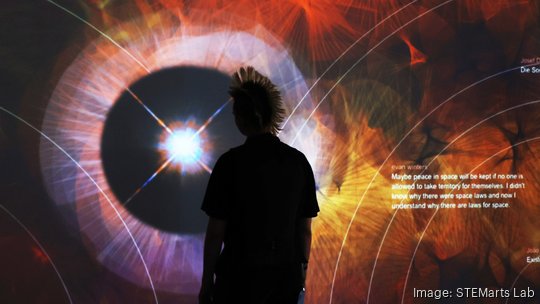
SpaceValley wants to help people better understand that, as well. One of the ways it plans to do that is by building an interactive database full of all types of those various organizations within or adjacent to space in New Mexico.
There are around 400 entities identified to be a part of the database to date, Ingram said.
"We don't want to just launch a website that's a pamphlet," she said. "And we don't just want to put a list of people on there. We really want this thing to be usable."
That database would have everything from historical markers to educational institutions to government agencies to industry partners. It would enable various parts of the ecosystem "to find each other," she added.
"We're not trying to do anything other than connect the pieces of the puzzle to put them where they work best," Kennedy said, "and amplify that."
"If we can start getting the buy-in from New Mexican residents to start identifying that they're part of the Space Valley, to the point where they don't even know if there's a foundation or not, it's just a movement — they understand where their place is — that to me is the biggest shift," he added.
An event the SpaceValley Foundation plans to hold on Oct. 18, called the "SpaceValley Inception Summit," is the first step in generating that buy-in. The summit would help the nonprofit better craft its database and programming and figure out where its own programming could fit alongside the efforts of other space-focused groups in the state, Kennedy said.
Dash2 Labs, the Albuquerque software firm, would take data collected during that summit and use it to inform SpaceValley's database development and programmatic planning, he said. The nonprofit hopes to launch its database in October, as well, Ingram added.
SpaceValley operates under a nine-person board of directors, four seats of which are currently filled. Its current board members include Q Station Executive Director Randy Trask; Monica Mitchell, deputy director of the City of Albuquerque's Economic Development Department; Kyle Lee, the CEO of CNM Ingenuity; and Jeff Bargiel, program director for CNM Ingenuity's Hyperspace Challenge.
The Space Valley Coalition received a $1 million planning grant from the U.S. National Science Foundation earlier this year when it missed out on a larger federal funding award it was in the running for. Kennedy said the SpaceValley Foundation is working off those federal grant dollars.
A chunk of that $1 million was earmarked for planning related to follow-up grant applications. He said the Foundation plans to continue applying for federal funding awards, although its focus would be on smaller awards, not "the big boys."
"The goal of the SpaceValley Foundation — because we don't want to create the programming beyond what everyone else does — is to go after these grants and then help distribute that, as part of our amplification, to the members of our organization," Kennedy said. "So it's like, 'Great, you do this really well — how do we get money to help you continue to do that?' Because all that's going to do is strengthen Space Valley."

